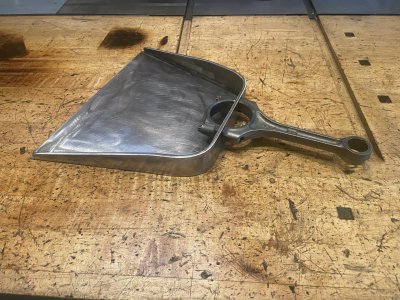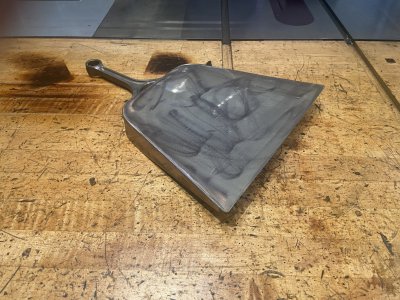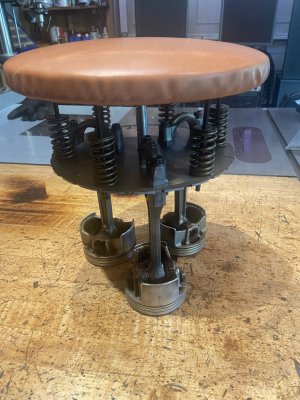- Joined
- Dec 20, 2021
- Messages
- 1,067
Patience, or materials, or tools aren't the issue here. It's just deciding on which way to do with the finish (and not screw it up in the process!). It will be used, so advantages for poly or varnish. I think straight shellac is out do to water marks. Oil would look good, but maybe not as robust. Lacquer sanded and buffed to a high gloss would be beautiful, for a while, until it scratched. I've even seen this wood stained and coated with many layers of automotive clear coat, and sanded/polished. (This is one option I'm seriously considering).
That said, I do like the oil finishes. Have done a few knife handles where it takes a year to finish the handle with boiled linseed. Coat, wipe, cure, 0000 steel wool, repeat (that wood with pores takes a long time to fill and cure). Have even left the BLO out in a sunny window to make "stand oil", which cures to a surprising tough glossy finish. That's held up well on a wooden knife handle for 15 years of near daily abuse.
Been buying adhesive backed rolls up to 1000gr, to sand/block this table flat. Planning on doing mostly hand sanding for this one. It's been drum sanded to 120 gr now, so is pretty good to start with.
That said, I do like the oil finishes. Have done a few knife handles where it takes a year to finish the handle with boiled linseed. Coat, wipe, cure, 0000 steel wool, repeat (that wood with pores takes a long time to fill and cure). Have even left the BLO out in a sunny window to make "stand oil", which cures to a surprising tough glossy finish. That's held up well on a wooden knife handle for 15 years of near daily abuse.
Been buying adhesive backed rolls up to 1000gr, to sand/block this table flat. Planning on doing mostly hand sanding for this one. It's been drum sanded to 120 gr now, so is pretty good to start with.





